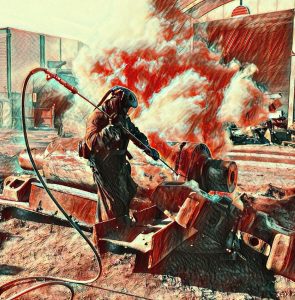Three metals stand out above the rest in terms of their usefulness: copper, iron and aluminum. But what`s with all this talk about copper lately? What makes copper and copper-based products so valuable to us, and why do societies depend on them? Copper is everywhere – take a minute and look around you, it’s in what you see and often in what you don’t see. It is behind the walls of your home, in electrical and telephone wiring, computers, refrigerators, microwaves and automobiles.

Copper has had one of the most profound effects on the development of civilization. From the dawn of civilization until today, copper has made, and continues to make, a vital contribution to sustaining and improving society. The first metal man used was probably copper. Archeological evidence shows it has been in use for at least 10,000 years.
Copper’s chemical, physical and aesthetic properties make it a material of choice in a wide range of domestic, industrial and high technology applications. Copper is ductile, corrosion resistant, malleable and an excellent conductor of heat and electricity. Alloyed with other metals, such as zinc (to form brass), aluminum or tin (to form bronzes), or nickel, for example, it can acquire new characteristics for use in highly specialized applications.
The average home today contains about 400 pounds of copper for electrical wiring, water pipes and appliances, while the automobile you drive contains about 50 pounds. Each child born today in America will need 1,500 pounds of copper in the course of his or her lifetime to enjoy our current standard of living.
Copper is essential to plant, animal and human health. Certain enzymes that are critical to the function of our body depend on copper.
Its most impressive attribute may be that copper is 100% recyclable without any loss of quality and approximately 80% of the copper ever mined over the last 10,000 years is still in use today.
Contact Us for the most competitive copper prices. Be kind to the environment and recycle your metals!
Interesting Copper Facts
In 2011 a rare one-cent copper coin from the earliest days of the U.S. Mint in 1793 sold for a record $1.38 million at a Florida auction.
Archaeologists have recovered a portion of a water plumbing system from the Pyramid of Cheops in Egypt. The copper piping was found to be in serviceable condition after more than five thousand years.
New York’s Statue of Liberty is sheathed in more than 80 tonnes of copper mined in Norway and fabricated by French craftsmen.
Copper is a natural antibacterial, and so inhibits the spread of bacteria in water and air distribution systems made from it. In the same way, brass doorknobs, handrails and fingerplates in public buildings can help to minimise risk of bacterial transfer.
One of the famous Dead Sea Scrolls found in Israel is made of copper instead of more fragile animal skins. The scroll contains no religious writings but only clues to still undiscovered treasures.
Copper cookware is the most highly-regarded by the world’s chefs. It has the best heat transfer of any material used in cooking, and as heating is uniform there are no hot spots.
Copper has been used for as long as we can remember. The Egyptians had the ankh symbol to represent copper, and pyramids in Egypt used copper for water plumbing.
